So you posted your story to your Twitter, Instagram, Facebook, Linkedin, and maybe even Google+ accounts. But the great social soap box isn't so. For businesses using social media, the most important message is: target, target, target.
Advice, resources, and insight on how to make social engagement work to grow your business and career.
Viewing entries in
Inbound Marketing
So you posted your story to your Twitter, Instagram, Facebook, Linkedin, and maybe even Google+ accounts. But the great social soap box isn't so. For businesses using social media, the most important message is: target, target, target.
If social media monitoring is about communications, measurement is about business strategy.
Influencers get the word out with the same reach and authority that TV, radio, newspapers, and flyers did in the former media era. It is through people sharing that things spread now.
Your online profile changes over time depending on how people interact with your content, interact with your competitors content, and even in how they look for you.
We feel a brand when we encounter a "thing" - an organization or grouping of people. We have opinion and emotion that we attach to every brand we encounter, the same way we do with every person we encounter, like it or not.
It turns out that storytelling, especially through a visual, "moving picture" medium like video, TV, or film is how we see things in our minds so they speak to us in our most natural language
How content is shared determines the ROI of the content more than the content itself and should be considered before the content is even created.
 Richard, Vincent, Katherine, Margaret, Lawrence, and Elizabeth have all been lost to me online because I have been looking to connect with Dick, Vinny, Kate, Peggy, Larry, and Beth - the names I know them as.
Richard, Vincent, Katherine, Margaret, Lawrence, and Elizabeth have all been lost to me online because I have been looking to connect with Dick, Vinny, Kate, Peggy, Larry, and Beth - the names I know them as.
Just because your parents named you Stephen doesn't mean you are disrespecting them by being Steve online. And if everyone knows you as Steve, when they go looking for you online they're not likely to find you if you're listed as Stephen.
The whole purpose of creating an online profile, on any social media channel, is to connect with people and to give them an authentic picture of who you are.
So the best approach is to think like a search engine. What will people search for when they look for you? Make that the name that you use on your social profiles. And while you're at it, make sure that the keywords that people are likely to think of when they think of you are also included in your profiles so they get picked up by search.
My real name is Jeffrey. It's the name my parents gave me and it is the name on my Passport and other formal/official documents. But everyone in my life knows me as Jeff. Fortunately for me, Jeffrey is likely to get picked up by most search engines when searching for "Jeff" but a scan of search results by any friend who is looking for me is likely going to miss my 7 letter full name if their brain is scanning for 4 letter names starting with J. So I use Jeff always.
Now imagine if your name is Margaret but you are known as Peggy! Who in the world is ever going to know to search for Margaret?
People aren't going to visit your profile repeatedly after they've connected with you. When they are looking for you you don't need them to find the formal you, just the you they are familiar with for one simple reason: so they can connect with you.
Include your more sophisticated name elsewhere in your profile if you can. In your Linkedin summary, maybe mention your full name somewhere or even tell the story of how you came to shorten your name if it's a good one.
You don't need to let go of your proper name. But if you don't use it regularly, put it in the same place you have it in your everyday life: in the background as a passing reference.
Photo ref: That's me and my friend Manami Fukuda being very sophisticated while modelling for a very fun and memorable event a few years ago.
 Likes, follows, or being added to circles are passive expressions of a low-level of interest that businesses pursue simply because they are numbers that can be measured, pure and simple. "How many" do we have this month compared to last month? It's a natural instinct to count numbers to measure perceived growth in a space that is always misunderstood by pretty much everyone in the beginning.
Likes, follows, or being added to circles are passive expressions of a low-level of interest that businesses pursue simply because they are numbers that can be measured, pure and simple. "How many" do we have this month compared to last month? It's a natural instinct to count numbers to measure perceived growth in a space that is always misunderstood by pretty much everyone in the beginning.
But when we play with social media for a little while we eventually come back to remembering that we are in business to sell something to people who need it. And as we know from politics, just because someone says they like you doesn't mean you'll get their vote when it counts.
One of the greatest and most necessary features of social media is the ability to filter out noise. When we can listen to such a massive number of people and businesses in this wide open online world we run into limits almost immediately as humans. We need to filter to get any value out of these channels.
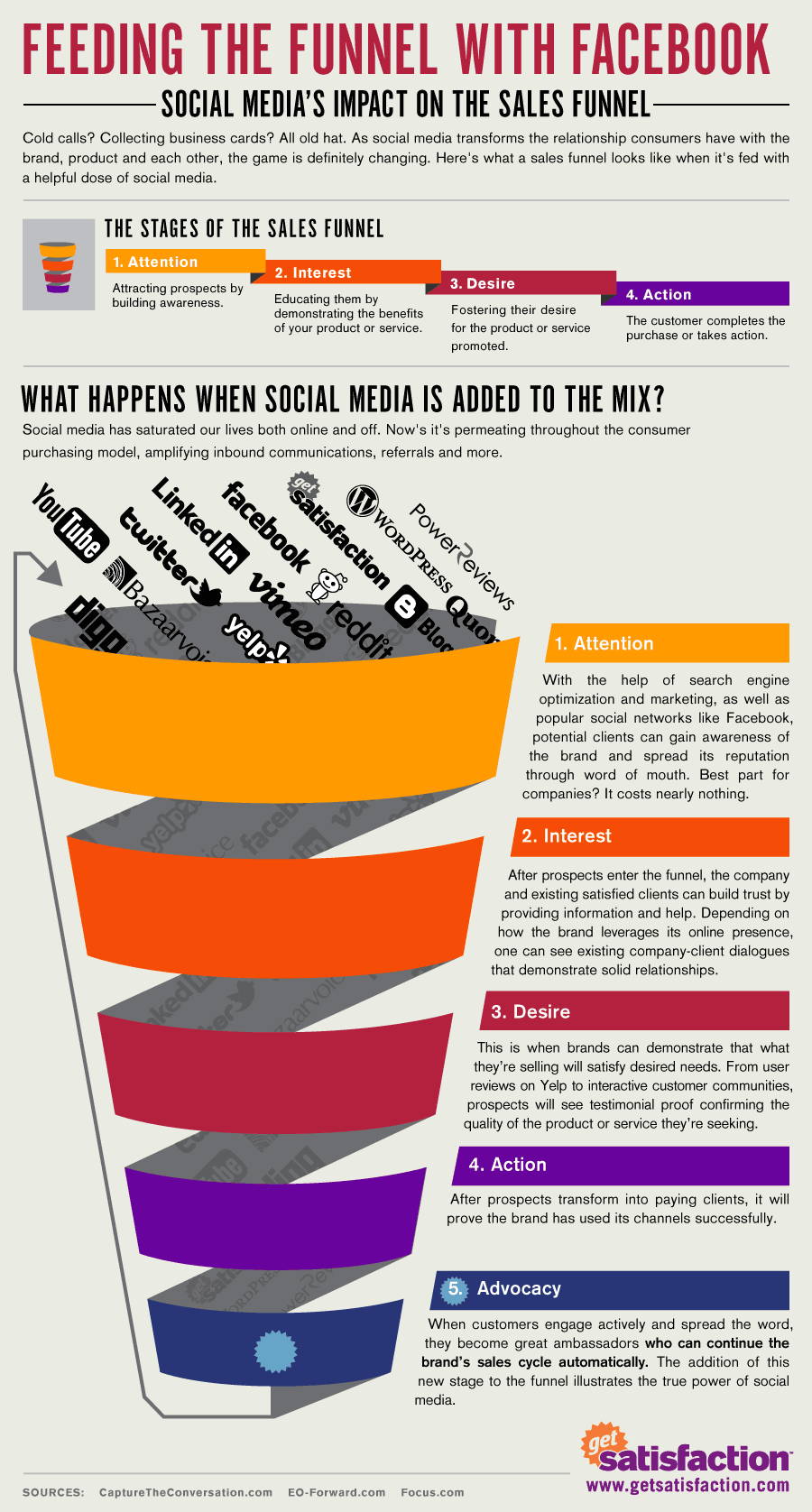
On Facebook, as quickly as you can call someone your friend or Like a business' page you can "Hide" them from your feed and never hear from them again. This should stop any business in their tracks who believes these superficial numbers count for anything close to long term value for their business. They don't.
On Twitter, the only thing gained by someone following you is that you can then send them a private direct message, which is basically an email. And we have a well-known word for a business who would abuse this channel: spam. Twitter is the truly wide open channel in which using a filtering tool so you can
pay attention to hashtags or lists of people with special interests is necessary to get any value. So if you have 1000 followers on Twitter you can't have confidence that any percent of those followers are paying attention to anything you post. What's even worse is that 85% of all tweets are never seen by anyone, ever.
LinkedIn may be the only social channel where the number of connections matters because there is little social activity. It is powerful and personal but brands struggle to get their numbers up for their Company pages on this professional, etiquette-driven channel.Google+ is the most recent major social platform to emerge and is actually built for when things get noisy. By allowing users to curate circles of their own design, it is an essential feature of this channel to choose who you want to listen to every time you visit.
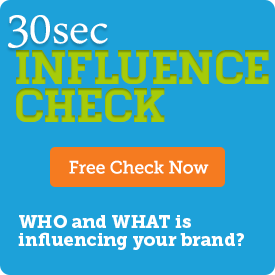
Social media presents your business with the opportunity to connect with customers in a two-way relationship. It is not a new broadcast channel and those who treat it as such are severely punished with isolation and a damaged brand. It's why so many businesses have "tried social media" and let their efforts die in frustration.
What you can do is measure activity on your channels and find out who is influencing your brand. Who is talking about you and with you and getting your content to new people who might be interested in it? Your influencers are having an impact on your brand in a way that growing follower numbers just is not. Social is about people, not audiences. [tweet this]
When you know who your influencers are you can get to know those people better. Smart businesses will look for ways to reward influencers for their interest in an effort to convert them to advocates that love what your company does and talk positively about your brand to others.
Advocates generate leads. Leads can be converted to sales. And sales are what grow businesses. Measuring this progression of the online relationship is how you measure the ROI of social.
Is your business counting followers or are you earning the deeper interest of your brand influencers? Please tell me what you've learned in the comments.
 We forget sometimes that ads are content, blogs are content, and social sharing is content. Your competitors have content and it is all public and discoverable.
We forget sometimes that ads are content, blogs are content, and social sharing is content. Your competitors have content and it is all public and discoverable.
What makes it even more interesting is that your competitor’s influencers share content too and you can watch for that as well. You can see who is spreading the word for your competitors and helping THEM grow! That is gold, is it not?
It’s not what you can discover that’s so special (although it really is), it’s what you do with the data that counts. So here are 3 things you can do when you know what your competitor is up to:
1. Watch for your competitor’s top content and dissect what makes it work and what doesn’t. When you’re confident that you have nailed what makes one of their blogs work better than another one you can incorporate the winning approach in your own content (your marketing team should have a ball with this).
2. Pay attention to who your competitor’s influencers are; the people who share your competitor’s content so they can reach their target audience. You can add them to a watch list of potential influencers of your own brand and regularly look for non-poachy ways to start and grow relationships with them. If you learn that one of their influencers is the CEO’s husband, well, you know.
3. Learn what hashtags and communities your competitor’s influencers use to get the word out and spend some time in those online neighbourhoods yourself. Use their tags occasionally and visit the blogs they visit. It’s a great way to get to know what interests your community.
Added bonus: if you know the sentiment (positive, negative) that people feel towards your competitor’s content you can think of ways to get more positive content into the same online communities. Sleeze alert: there is a huge risk of coming across as tacky if you don’t think this through with some respect for your competitor and their fans.

You can do it simply by paying attention and creating a scheduled time to regularly look at your competitor’s content. We actually use a tool called Measurely to run discovery campaigns that give us this and a bunch of other super valuable data for our clients. But if your brand community is still small you should be able to handle this with some regularly scheduled snooping and gathering of info into a spreadsheet.
It’s worth it. Your competitors are sharing content that they hope will interest the same people you are. Why limit the data you gather and learn from to just your own when you can learn from theirs too?
 Advertising has always been a bit of a game of roulette. The famous quote that captures the angst of the business owner was portrayed by John Wanamaker nearly 100 hundred years ago when he said, “half the money I spend on advertising is wasted. The trouble is I don’t know which half.”
Advertising has always been a bit of a game of roulette. The famous quote that captures the angst of the business owner was portrayed by John Wanamaker nearly 100 hundred years ago when he said, “half the money I spend on advertising is wasted. The trouble is I don’t know which half.”
I promised I would not name names.
But in the past two years I have had several clients who cut over $1000 per month or more from their advertising budgets - and saw no drop or difference in their business.
What? In one case nearly $3000 per month with no discernible difference in the bottom line? What is going on here?
If you had a big budget twenty years ago, advertising was also a bit of a math formula - or at least so I was told by my business owning friends who fighting the good fight at that time. They tell me that once you had the right channel (TV, radio, or print) you could roughly figure that if you spend X% of your gross revenue, you would see a Y% bump in the bottom line.
I am not sure the good old days were really better.
Today there are more options and more voices clamoring for your advertising and marketing budget than ever before. Do you keep you space in the Yellow Pages? Is it worth paying for exposure in the business directories? How about search engine marketing? Or social media? Everyone seems to be on Facebook these days...
Making sense of the shift to digital and social business is one of the biggest challenges for small business owners and managers these days. The shift seems to elicit one of two reactions: “Oh yeah!” or “Oh no!”
Here are a couple of quick ideas to consider if you’ve “discovered” an extra $30,000 in your advertising budget this year. Yes, I know you deserve that long postponed vacation, but this is about low-hanging fruit that will make the best ROI of what you are already doing:
If you haven’t found excess money in your advertising budget, or are struggling to figure out what might be the best use of your hard earned dollars - you can make sense of this new chaos. The businesses who do, are going to own their competition in the near future. The ones who don’t can stick their head in the sand, because even in the slowest of markets - social business is becoming the new phone, and your customers are expecting you to answer.
If you want to make sense of your advertising budget, and get a better ROI on the dollars you are already spending, join us for this focused workshop and save thousands over the course of the year...
 Bringing one group of friends into a conversation that's happening in a different place on the social web isn't always easy. Sometimes it's awkward and sometimes it's unwanted. But you never can tell where the conversation will strike up and sometimes it makes sense to bring those conversations together. And it always makes sense to bring the best content you have curated into your media hub: your blog.
Bringing one group of friends into a conversation that's happening in a different place on the social web isn't always easy. Sometimes it's awkward and sometimes it's unwanted. But you never can tell where the conversation will strike up and sometimes it makes sense to bring those conversations together. And it always makes sense to bring the best content you have curated into your media hub: your blog.
For a while now Twitter has been allowing tweets to be embedded into web pages with a little bit of code they provide with each tweet. Just look under any post on Twitter.com and you'll see a "more..." link that drops down to expose an "Embed" link. Grabbing the code provided will allow you to embed something like this:
"Either write something worth reading about or do something worth writing about." - Ben Franklin #quote
— Sociallogical™ (@soclogical) November 21, 2011
I could just paste a quote into my post so you can see it and read it, but because I embedded it as a tweet, you can now retweet it, favorite it or do whatever you like to interact with that content on Twitter.
Now Google+ has entered this game, allowing posts on the fastest growing social channel in the world to be embedded into blogs and webpages everywhere, pulling new people into conversations that are already in full swing.
There are a few things that make this even more interesting than Twitter's offer:
Give it a try. In the drop down menu in the top right of your public Google+ posts you'll see the link to "Embed this post". Grab the code and use it the same way as the Twitter embed code.
Embedded Twitter and Google+ posts provide interesting ways to repurpose your social content into your owned media and introduce one segment of your community to another to extend the conversation and bring your brand community more closely together.
What could you embed in your blog that pulls your social media islands closer together?
An African proverb says that it takes a village to raise a child. I believe this is true. I can't imagine where in this world my baby boy would be without the love, support and nurturing of those in our community.
I am also lucky enough to be a member of a more specific community of new moms. That’s us up there in the photo. Bi-weekly we meet in each other’s living rooms, put on a pot of coffee and ventilate our baby woes, share stories and experiences, learn from one another, laugh together, reassure each other that we are doing just fine and, most importantly, we remind each other that we are not going this motherhood thing alone.
Much like it takes a village to raise a child, it takes a community to raise a brand.
This is the next lesson in a series of posts about what my infant son has taught me about life and content marketing (here's lesson 1).
I will never forget the music to my ears that was a fellow expectant mom exclaiming, “we should get together for regular coffee and Bailey’s gatherings after our babies are born.” I'm not sure if I was more excited to fathom a social life after baby, or the ability to finally enjoy an alcoholic beverage again. In any case, she was the leader our mommy community needed.
You see, it takes a leader to get a community going, and then it takes keen individual interest to keep it going. We mommies are fortunate to have all the right ingredients for a healthy community.
Sure, we get together and talk about the best baby rearing practices, articles we've read, developmental milestones and statistical norms, but these discussions alone are not what gel our community together.
This stuff we can get from the googles.
The cohesion of community goes beyond information sharing. A community is formed around a common goal, an emotional connection, a shared opinion, a sense of security, belonging and ownership, safety, non-judgement, protection and understanding. We have expressed on many occasions that we love and care for each other’s babies as if they were our own.
When you’re creating a community around your brand, your members need something to CARE about.
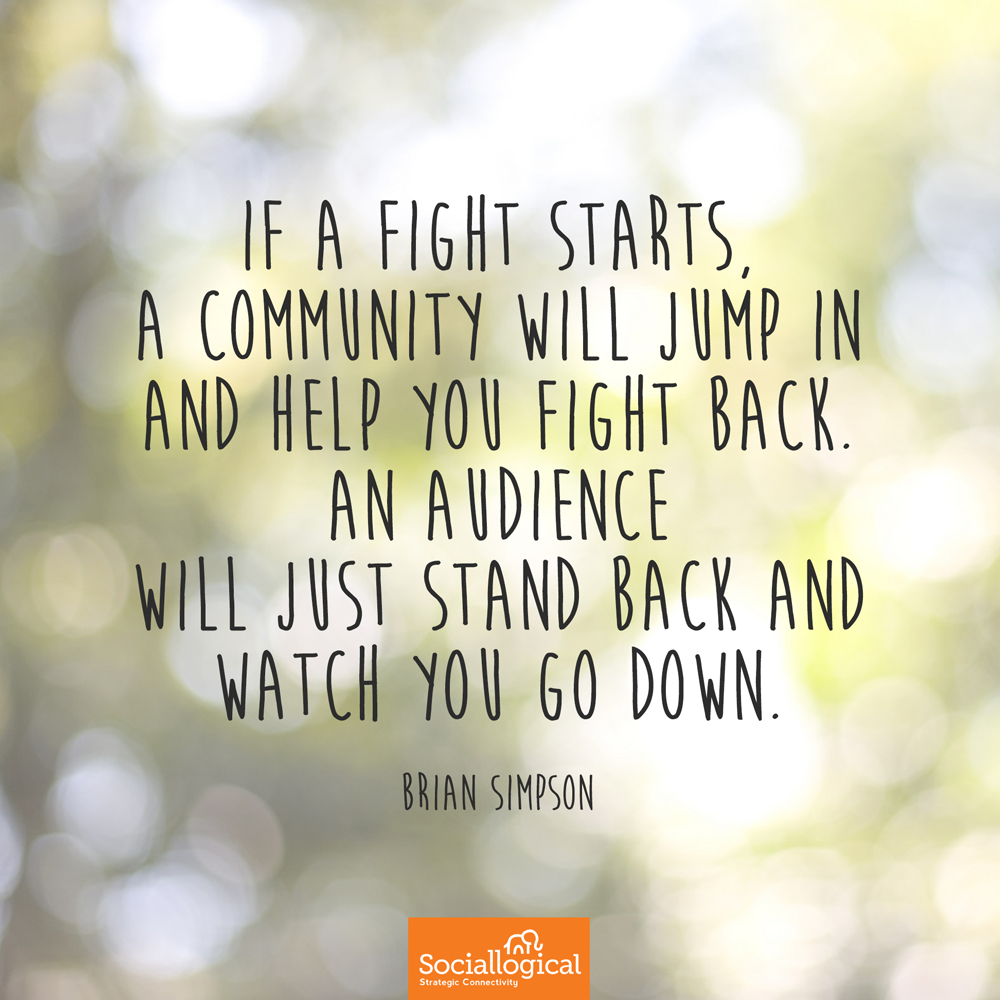
Actually, mean people can galvanize a community, pulling people together to care more deeply for what brought them together in the first place.
Motivated by who-knows-what, some people are just innately mean-spirited. It is no secret that social media is a breeding ground for meanies to unleash their inner bullies. They can attack the community, sometimes in very stealthy ways, by framing their communication in an accepted manner and style. Eventually their contributions will undermine what people in a community care about and raise the ire of some members to defend what is important to them, and in doing so they will freshly define the essence of the community for others to rally behind.
The critical mass is the tipping point, the point at which the community becomes self-sustaining.
Finding this threshold is not cut and dry. Apple Computer's current community mass is over 200 million. Our mommy group: 11 pairs of moms and babes. There is no magic formula to determine the critical mass of your community, however you will know it has begun when your community starts to initiate activity independent of your leadership. For example, a retailer might plan events that bring customers to their store but critical mass is achieved when the community begins to plan their own events around the brand. Recently I was invited by a friend to attend a party at a local shoe store. The staff were every bit a part of the party and little to do with the planning.
Sadly, our mommy leader needed to ‘bow out’ as she put it, to return to full time work. She is still very much a member of our group, but our mommy community lives on in her absence.
If you spoon feed the right ingredients that support what your community cares about most, there will come a point when you can sit back, and enjoy. Like an infant, your community has learned to feed itself.
No one is a member of just one community. We overlap and cross-reference and bring great things from one into another. But what binds a community is the one or two things its members care about the most and the characteristics of how the caring is expressed. Our mommy community cares primarily about our babies. But the characteristics of our community are based on openness, non-judgement, and love of a good time in a real sense, not just a motherly one.
What does your brand community care about the most and what are the ways in which you express that caring? If you find 5 minutes today, list these things for yourself. If you can identify what really matters to your community it might change how you share with them.
Next lesson: Trust with a capital T
The quote above from Brian Simpson actually came to us from a great ebook by our friends at Measurely.
 Two years ago I signed my team up to participate in a course to teach us how to build a social business. It lit a flame that has been burning ever since. Telling our company’s story using social channels has helped us build community around the world. The course was Sociallogical’s Understanding Social Business and, after completing the course, Sociallogical’s Jeff Roach and I discussed the possibilities of putting together a course about the power and brand empowerment of video storytelling in the new digital landscape.
Two years ago I signed my team up to participate in a course to teach us how to build a social business. It lit a flame that has been burning ever since. Telling our company’s story using social channels has helped us build community around the world. The course was Sociallogical’s Understanding Social Business and, after completing the course, Sociallogical’s Jeff Roach and I discussed the possibilities of putting together a course about the power and brand empowerment of video storytelling in the new digital landscape.
It took a year and a half to accomplish, but here we are! Hemmings House and Sociallogical are very excited to roll out our latest course, “Moving Pictures: Making and Sharing Social Videos”. This is an introductory course that will motivate you to pick up your own camera and begin producing content for your business immediately.
Video is considered one of the most effective communication tools in the social space. Businesses are now building their own production companies within their own walls to keep up with the demand for original and relevant content that supports the brand and the tribe.
My hope is that this course will ignite the same fire in you that the Understanding Social Business course did for my team and I. Once you realize that you have the power and the creative assets to tell your own story (and that your own story is truly epic), then this course will encourage you to get out there and shoot!
 Lesson 1 in a series: What my infant has taught me about blogging/content marketing
Lesson 1 in a series: What my infant has taught me about blogging/content marketing
My son was born exactly 6 months ago today. As any new parent can attest, my life has gone from a regular work, eat, sleep, [repeat] routine to a whirlwind of spit up, shit up, sporadic napping and a whole lot of ‘firsts’ for both of us. My love for my baby boy runs deep. Already, I can’t imagine a world without him. While it might seem that I am teaching and moulding this new being into the kind, compassionate and thoughtful human that I wish everyone could be, the truth is, he really is the one who has been teaching me about life’s deeper dimensions...and how to function on much less sleep.
And while learning these big lessons of life, my life as a content marketer has been influenced as well. I see what we do to build brand communities and grow businesses for niche clients in a different way as well and I have decided to collect a few of these lessons. Here are a few important lessons I have learned from being a new mom that apply to growing brand communities.
Tell a long story to an infant and see how long his attention lasts. On a good day, you might hold his gaze for 30 seconds. Now tell a long story to your social business audience. On a good day, they might stop reading after 30 seconds.
In today’s content rich society, readers are getting slammed on all fronts with news, articles, blog content, and funnies. On a daily basis we spend several minutes a day fending off content that comes from a variety of channels. In fact, most days I feel like I am more of a content ninja - stealthily killing content and chopping bad subscriptions - than a consumer. The point is, the story you want to tell or the message you are trying to convey needs to lock and load the reader. Here are a few tips that are tried and tested on my 6 month old budding human:
I remember a time in my own childhood that I wouldn't look twice at a piece of reading material if it didn't have some visual stimulus. I didn’t judge a book by it’s cover, but I certainly did judge it by the volume of imagery. Visuals are an important element for drawing the audience in and keeping them engaged.
The evidence is in the platforms. Such consumption applications as Instagram and Pinterest hinge almost entirely on visual delights. Facebook and Google+ have adopted much more visually gratifying formats as well. Find a way to catch your reader’s eye with something aesthetic.
Engage your audience. Giving them an opportunity to weigh in and keep the conversation going, or providing interactive points is a great way to achieve reader buy-in, and keep them checking back for more. It isn’t enough to just broadcast to your readers anymore, they don’t just want to listen. They want to participate, they want to be a part of the story you are telling.
How do you engage your child? #thisissocial
— kellylawson (@kellylawson) June 8, 2013
If people aren't judging books by their covers and pictures, they will judge a story by its title. As 60s copywriting legend David Ogilvy says,
“on average, five times as many people read the headlines as read the body copy. When you have written your headline, you have spent 80 cents out of your dollar.”
If you don’t hook your reader with a compelling title, your story and message won't make it past the content ninja phase.
(I didn't make that title up) Like a lullabye, once you've written and read and re-read and re-edited your content, it all begins to sound the same. If what you have to say isn't time sensitive, take a night and sleep on it. Revisit it in the morning with a fresh outlook. If time is a factor, pass it over to a trusted third-party editor because you're too tired of it to make a good judgement. You will be amazed at how your perspective will change, and the errors you will have missed.
Watch for LESSON NUMBER 2 next week: Why community matters and mean people suck...and, tell me about your experiences with engaging your audience, infants, adults, spouse, cats...what works? What doesn't?
Sign up for our updates if you haven’t already
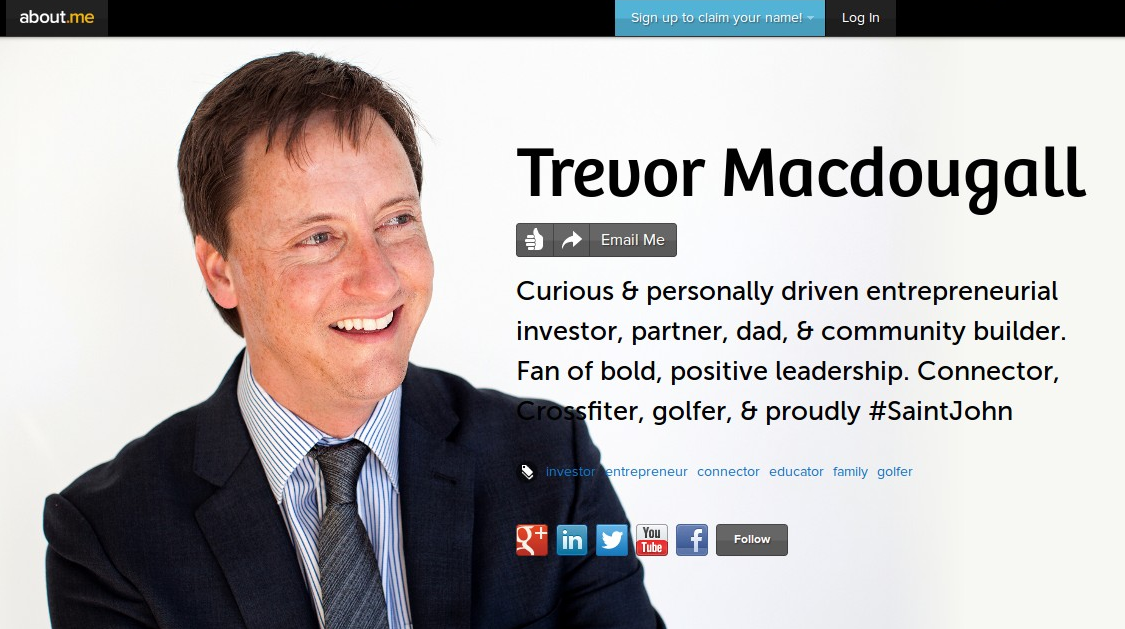 You may think that having a strong profile in all places might be only for the hyperconnected so I have a strong suggestion: pick one and beef it up.
You may think that having a strong profile in all places might be only for the hyperconnected so I have a strong suggestion: pick one and beef it up.
While many of us have accounts on multiple websites, social networks, and our employer's sites, very few people pay attention to the quality of their online presence and the ease with which they can be reached by a client or partner. We have discussed before how your profile is your ticket to getting connected with others online but we never addressed which profile is the most important. I honestly don't think there is a best one for everyone but here is some food for thought:
Really, this is the most important profile for professional people in the western world. Your profile on Linkedin is comprehensive showing me your volunteer activities, who you're connected with that I might be connected with, as well as the richest display of your education and experience. If you don't have a sizable inheritance and need to make a living from your connections to one or more people, you need to be on Linkedin. If you are in a B2B role, you might want to make this your main profile that you give the most attention to.
Put aside your opinions of love or scepticism for Google+ as a social sharing channel and pay attention to this: your Google+ profile feeds your Google search results and Google search is how most people still find pretty much everything online - including connections. It is also the best profile for linking to all of the other places you can be found online and it includes one of my all-time favorite profile features for understanding another person's perspective: where have I lived before. If you want people to find you easily you might want to make Google+ your main profile.
About.me is like an online business card or a central hub for all of your other profiles. It has competitors but it is the most popular profile-only account you can have that doesn't have a social network behind it. It is easy to get, simple to use, attractive, and adapts your profile to a variety of screen sizes well. If you are picking one main profile to focus on, this might not be it, but if you have more than a couple that you give attention to, this might be a good place to bring them all together. I use it for my main URL: jeffroach.ca
The largest, most influential social network on the planet has a lousy profile format that not a lot of people rely on to get to know someone new. Facebook's profile is loose, un-standardized and sloppy and geared more for friends who know each other well than for discovery of someone new. However, Facebook does feature more personal preference type of details that might paint an endearing picture for you if you want to be known more for your interests than your experience. Artists, curators, and culture-lovers can show their favorites of all things well on Facebook and that might be your strength.
With a bio of only 160 characters and only a few other details like location, web link, and not much else, your profile on Twitter is too short and simple to ignore. Beef up your profile on Twitter because it will only take you a few minutes. But don't expect your profile on this channel to satisfy the interests of a connection who is trying to get to know you better. I simply would not recommend using Twitter as your main profile online. Link from it to something more comprehensive.
There are countless third-party profiles you can focus on and beef up and some of them can be very important, especially if they are specific to your industry and widely used by your colleagues. But the ones mentioned above are the big ones, in my opinion.
We don't all have time to be everywhere online and we certainly can't manage to support an endless collection of perspectives on who we are, what we've done, and why others might want to get to know us better - or hire us. But everyone needs one main profile that makes it easy to find out who they are, what they've done, and how to connect with them right now. What is your main profile and are you happy with what others will find there?
It is not a new thing to spend money on marketing based on the number of people who will be exposed to the effort. It is a new thing to know how much money was earned as a result of money spent on a marketing effort.
While media outlets have always been able to tell advertisers the size of their audience through subscription numbers, average viewers and the like, they could never measure the outcomes that really matter to a business - they still can't. And even in the social business era, justifying a marketing effort has continued to be a measurement of buzz, chatter, and the general response created by what was shared. Is that enough?
For most brands, the goal is to make money and grow. So money spent on marketing or any other investment needs to measure how it makes money and moves the business toward its goals or it just doesn't make sense. Does it?
If you can really measure the return on investment (ROI) made in the social space with real business measures then you can start optimizing your efforts based on what has worked or not worked in your past efforts.
Last week our friends at Measurely shared a story we told to the crew at Hemmings House of how we measure the outcomes of our social media efforts using their incredible tools (see video at top of page). To make our story clear, here's what matters to us:
If Kelly shares 30 of our online assets (reshares something we posted, likes us on Facebook etc.) in a month and Bob shares 3, the buzz game tells us we should really get to know Kelly better. But if Measurely shows us that Kelly led to only one signup for our courses and Bob led to 20, business logic tells me Bob is our guy. He's the advocate who is sharing and influencing our brand and buzz alone would have put him low on our priority list.
Get it? Buzz is good. Measured growth is better.
Yes, social business is about people connecting to people, building relationships, getting to know how to help, and adjusting products or services for the people who support the brand.
But people socialize with people, not brands. A brand can't socialize any more than it can eat a sandwich. Brands can't talk and walk so brand content needs to be as focused on the things that will cause growth as possible so the brand community will have something to talk about that is relevant and useful.
Measurely has become an essential partner to help us support our client's growth goals and to help us grow our own business. We are more than happy to be advocates for them. So important has their product becomes to Sociallogical that we even created a central business service around it.
As we have said before, social activity is not busywork, it's business intelligence. With Measurely's insight we can report strategic intelligence to our clients that can make them smart in the social space and act toward growth of their companies. Without Measurely, true social optimization can't happen and we are back to guess work. That's something that was not possible before or since the emergence of social media.
How much time or money would your company spend on an activity whose effect didn't help the business grow? Probably not a lot. But without measuring the bottom line effect of the effort, how would you know?
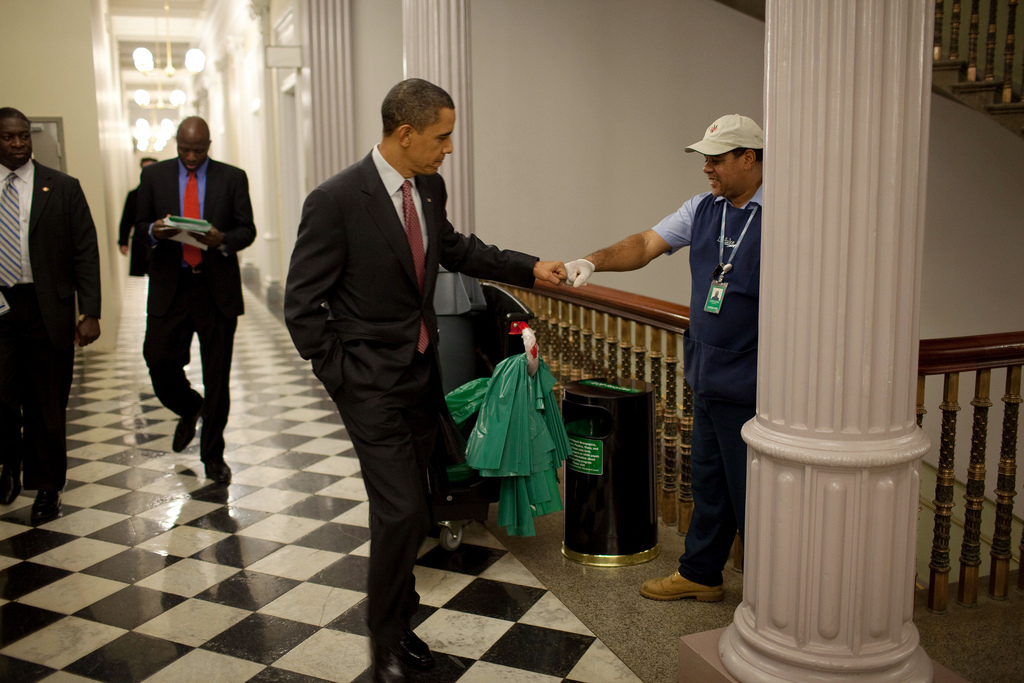 Getting someone who is not you to "be you" online is strange to me. It's like asking someone else to go on a date for you. Not only do you miss out on the engagement and enjoyment of the date, but it is also fake and downright creepy.
Getting someone who is not you to "be you" online is strange to me. It's like asking someone else to go on a date for you. Not only do you miss out on the engagement and enjoyment of the date, but it is also fake and downright creepy.
But what you say and what you share are two different things. I can get an associate to speak on my behalf and share my interests and positions, as in the case of a lawyer or a press agent, but I would never ask either one of them to actually pretend they are me and imitate my voice when talking to people. It's kind of funny when you think of it.
That's why I have resisted potential clients who have sought to just pay someone to do their social media for them. Instead, I offer them an understanding of the phenomenon so they can take the reins on their online engagement.
But some aspects of social media marketing need special skills and reap special benefits. For example,
That last point, curated sharing, is the one that most businesses jump into, with varying degrees of success. Most people understand, from as far back as high school, that who and what they are associated with impacts how others see them. So finding great stuff to associate themselves with and share online is something most of us naturally start doing when we plug our businesses into social.
Although it can be time-consuming and a major distraction, you do know (or should) what content is most interesting and helpful to your clients. And the content you find (vs. content you create) is the most readily available source for your social channels.
Of course, you need to come alongside the content you are curating with content you are creating and conversations you are sharing based on all of it. That's where the social, human element comes in and without it you're going to have a hard time gaining or keeping your target client's attention.
The point of selecting great content to share, above all, is to be helpful and interesting to the people you want to attract to your brand community. It is a discipline every company should be exercising as a basic, foundational social media investment.
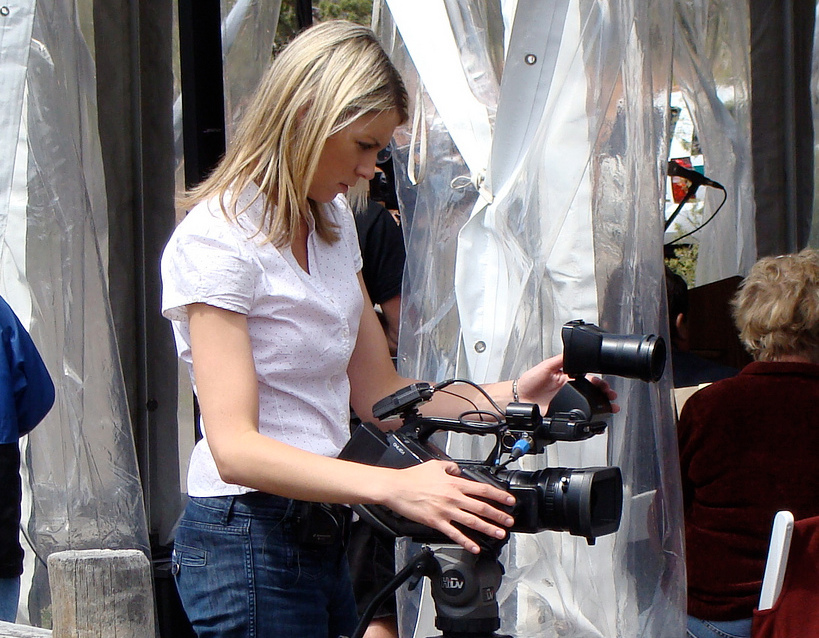 We're in the content marketing era, which is more show and less tell. Clients don't want you to tell them how great you are through advertising, they want you to show them value at the start of the relationship.
We're in the content marketing era, which is more show and less tell. Clients don't want you to tell them how great you are through advertising, they want you to show them value at the start of the relationship.
Every business has stories to tell and needs to inform, educate and be useful to clients through great storytelling. We tell stories across social media channels, blogs, and through opinion pieces, research, comments and even through our products and services themselves.
If you look at what a journalist learns it's easy to see that having their skill set in-house is a huge asset for any company that knows how important content/inbound marketing is.
I combed through the course lists for a few journalism schools online and collected a sample of course titles that I believe make my point well:
As traditional media fades away, the content that will create awareness and demand for what we sell, more and more, will need to be created, not bought. We need to share more and advertise less. Our clients need to find media-rich and useful content specific to their needs when they find us.
Journalists are trained storytellers. They are researchers, writers, listeners, and able to think from a variety of perspectives. That skill set is perfect for creating content that online communities would find interesting, useful, or even entertaining.
Here's what the most awesome journalists do really well:
The culture of non-bias that many journalism schools have ingrained in students can be a bit tricky for marketing.
Your company should have a bias. Your bias and your approach to what your clients need and the unique way that you meet that need differentiates you from your competitors and brings choice to the marketplace. The people you hire for any role in your company need to understand your unique approach well, support it, and speak from that biased perspective every time they speak for you. Non-bias does not lead to engagement that sticks and stickiness is what you're after.
I have worked with amazing journalists who have turned out to be the best storytellers any business could hire. They have the skill set I know our company needs for our content marketing and we plan to hire more of them in the coming years.
A business needs to show their value with great content instead of just telling people how amazing they are through advertising and contrived efforts. People will come to your party but if the vibe isn't good, they'll sneak out the back door.
As traditional media loses its punch, I hope more and more journalists will look to marketing departments to find a new home. Our businesses need you whether they know it yet or not.
Do you plan to hire a journalist to join your marketing team?
 Have you ever noticed the unique bonds that are forged between you and the people who have shared an experience with you? Some experiences are traumatic, some adventurous, some beautiful, and some are downright awful. But if you experience something with another person, whether you are strangers or old friends, that experience will create a strengthened relationship between you that is incredibly unique. I call this the Shared Story Experience.
Have you ever noticed the unique bonds that are forged between you and the people who have shared an experience with you? Some experiences are traumatic, some adventurous, some beautiful, and some are downright awful. But if you experience something with another person, whether you are strangers or old friends, that experience will create a strengthened relationship between you that is incredibly unique. I call this the Shared Story Experience.
On November 21st and 22nd my wife and I were in our hospital’s Postpartum ward with our new baby Willow. As it turns out, two really good friend couples of ours were enjoying their new babies in the same ward: Sociallogical’s founder Jeff Roach and his wife Kelly Lawson welcomed baby Jude to the world and Potter/Artist Darren Emenau and Nora Kennedy welcomed baby Lucy.
We popped the Champagne, turned on the music and turned the unit into the postpartum PARTY ward! What are the odds that three groups of friends would share such a powerful experience in tandem? From this point forward the parents of these three little bambinos will have a special bond created by the shared experience of delivering babies within hours of each other. This is the shared story that we experienced together.
Businesses work with other companies that are in line with their own value sets, interests, and experiences and should seek opportunities to pass on these shared story experiences. They will align your brands and boost all of you as you expose your humanity and what is important to both of you.
Whatever the shared story is or was, use it as your connecting point to strengthen your business relationships. If you don’t have shared story experience, go out and create them! At the core, the best partnerships are based on positive relationships that are strengthened by shared experiences.
Or, arrange to have babies at the same time as social media experts that will help grow your community, as pottery masters who will create the very best client gifts, or as a filmmaker who could help you tell your story to the world :)
Do you have a shared story experience you could share with me? I’m a collector - I’d love to hear it!